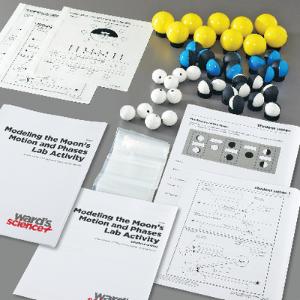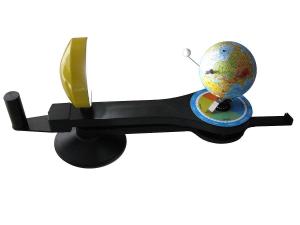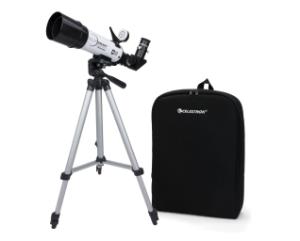Solar Eclipse: The Essential Guide for Teachers Outside the Path of Totality
Elementary, Middle and High School
The cosmic calendar is packed with awe-inspiring events, like the October 2023 annular eclipse that wowed skywatchers. On average, there are about two to five solar eclipses every year, with a total eclipse occurring about every 18 months. Generally, total solar eclipses are visible every 400 years from any one place.
Some lucky North American regions will get a double delight from experiencing the 2023 annular and 2024 total eclipses. Check here to see if at least part of the next eclipse will be visible in your city.
But even if your region is not on the path of totality (the area where the total eclipse can be seen), an eclipse presents a unique opportunity to engage students in astronomy. Whether the moon's shadow play or the sun's disappearing act, these spectacular events can ignite students’ natural curiosity about the universe.
Understanding and Observing the Eclipse
Solar eclipses occur when the Moon passes between Earth and the Sun, casting a shadow on Earth. Total eclipses, where the Moon completely covers the Sun, are a rare marvel, whereas partial eclipses, where only part of the Sun is obscured, offer their own unique spectacle.
If you are not in the direct path of a total solar eclipse, you can still observe a partial eclipse by standing within the penumbra zone (see Fig. 1). In this zone, only a portion of the sun is obscured by one side of the moon.
Figure 1. science.nasa.gov/eclipses/geometry/
Remember, safety is paramount. Ensure students use proper eclipse viewing gear when observing these events (see our safety guide under content resources).
Maximizing the Eclipse Experience Outside the Path of Totality
For those outside the path of totality, viewing a partial eclipse still offers a remarkable experience. Here are some ideas to ensure your students don’t miss out on this rare cosmic phenomenon.
Hands-On Classroom Activities
Bring the eclipse to life with simple projects that simulate solar eclipses to create a fun and interactive experience.
- Pinhole Projectors: Use cardstock or paper to create a simple pinhole projector that safely projects the sun's image and allows you to watch the eclipse indirectly.
- Eclipse Model: Create a 3D model using balls representing the Sun, Earth, and Moon to demonstrate the alignment during an eclipse.
- Effects of Solar UV Radiation on Cells: Reinforce the importance of eclipse viewing safety guidelines with a dramatic demonstration of the Sun’s effect on living tissue. Treat a Petri dish lid containing a sun-sensitive yeast strain with sunscreen or cover part of the dish with sunglasses, leaving part exposed to ultraviolet radiation from the sun.
- Shadow Experiments: Use light sources and spheres to simulate how shadows are cast during an eclipse, illustrating the concepts of umbra and penumbra.
- Eclipse Journaling: Have students maintain a journal to record their observations and thoughts about the eclipse, promoting writing skills and scientific observation.
- Eclipse Flipbook: Learn about each step during the solar eclipse with a free flipbook template from McGraw Hill, plus other timeline and map activities.
Additionally, NASA provides an array of lesson plans suitable for different grade levels, accessible through their dedicated Eclipse education page. Find engaging lesson plans like Modeling Sun-Moon Positions, What Do Scientists Learn About the Universe from Observing Solar Eclipses, Modeling Solar Eclipse Geometry, and more!
Virtual Eclipse Experiences
Not to be overshadowed by the DIY activities, virtual viewing options can provide a thrilling immersive experience. Websites like the American Astronomical Society offer resources for live streams, NASA Solar Eclipse Partners, and online viewing parties with sister classrooms, ensuring no one misses out on this celestial event.
Community Engagement
Extend the learning beyond the classroom by collaborating with local science centers or astronomy clubs. These partnerships can provide valuable resources, speakers, and even virtual conferences to enhance the eclipse experience. Plan ahead to ensure their availability to support your activity.
Content Resources for Teachers
Use these popular Ward’s World content resources for detailed eclipse facts, guides, and posters to enrich your lesson plans.
- Eclipses: The Definitive Facts & Poster - Get key facts about solar eclipses, including types, frequency, atmospheric effects, and safe ways to view them.
- Eclipse Science Facts; Plus a Free Handout from AccessScience - This free article from McGraw Hill’s AccessScience covers what happens during solar and lunar eclipses and their impact on the Earth.
- Warnings, Rules, And Guidelines for Safe Solar Observing - Warnings, rules, and guidelines for safely observing eclipses and other safe solar events.
Eclipses are fantastic teaching moments. Use the resources and activities we shared to create an enriching science experience for your students, regardless of their location.
Recommended Products
[StartProductBlock]

Modeling the Moon’s Motion and Phases Lab Activity
The kit uses teacher-directed lessons and student activities to help students understand the Moon's motions and how to interpret them.
[EndProductBlock]
[StartProductBlock]

Orbit Tellurium 2
Demonstrate night and day, the seasons, phases of the moon, and eclipses with this robust and flexible model.
[EndProductBlock]
[StartProductBlock]

Celestron EclipSmart Travel Solar Scope 50 Refractor Telescope
Three dimensional model allows students to study the motion of the earth and moon around the sun, and demonstrates the science behind phenomena such as seasons, phases of the moon, eclipses, and tides.
[EndProductBlock]
